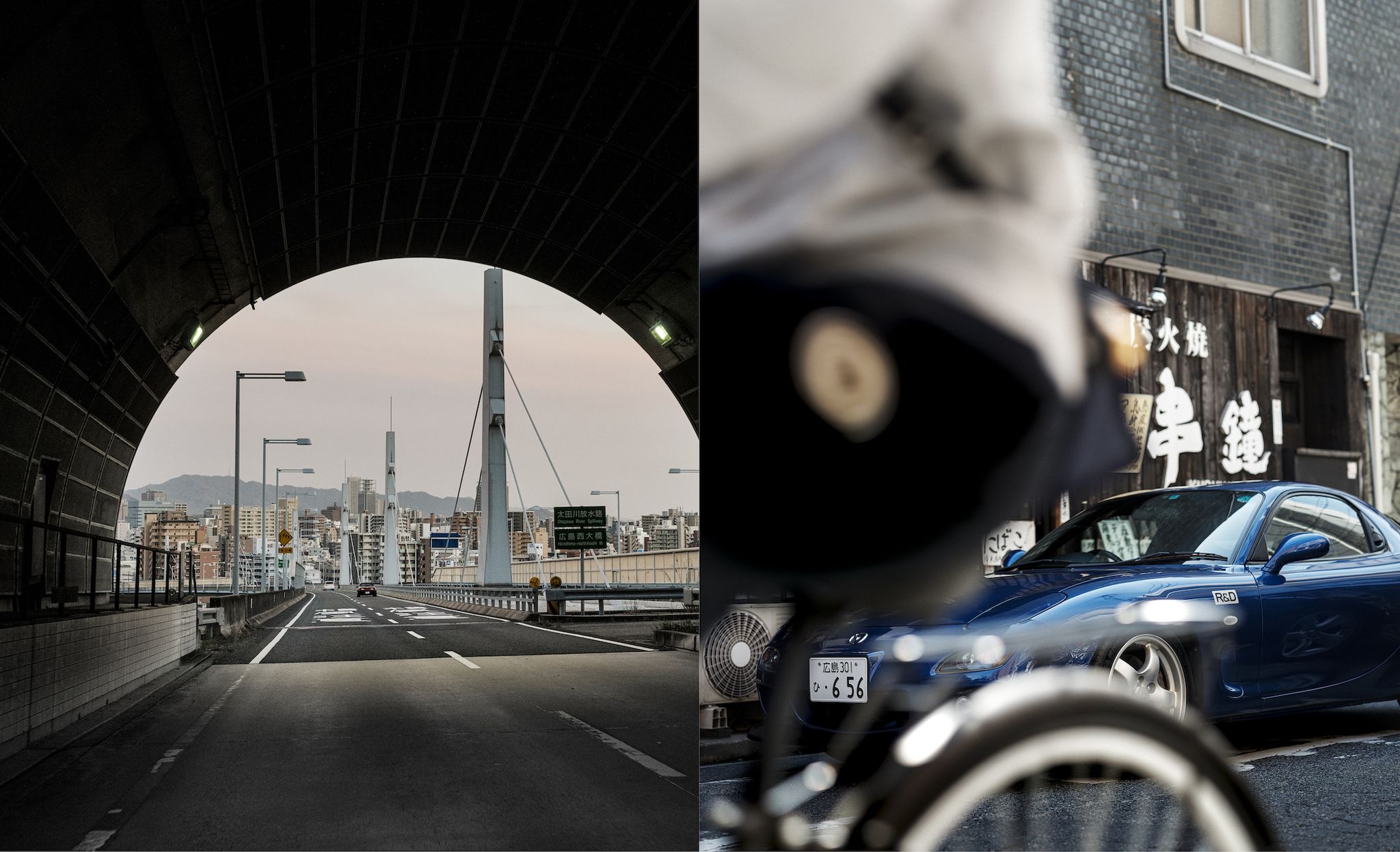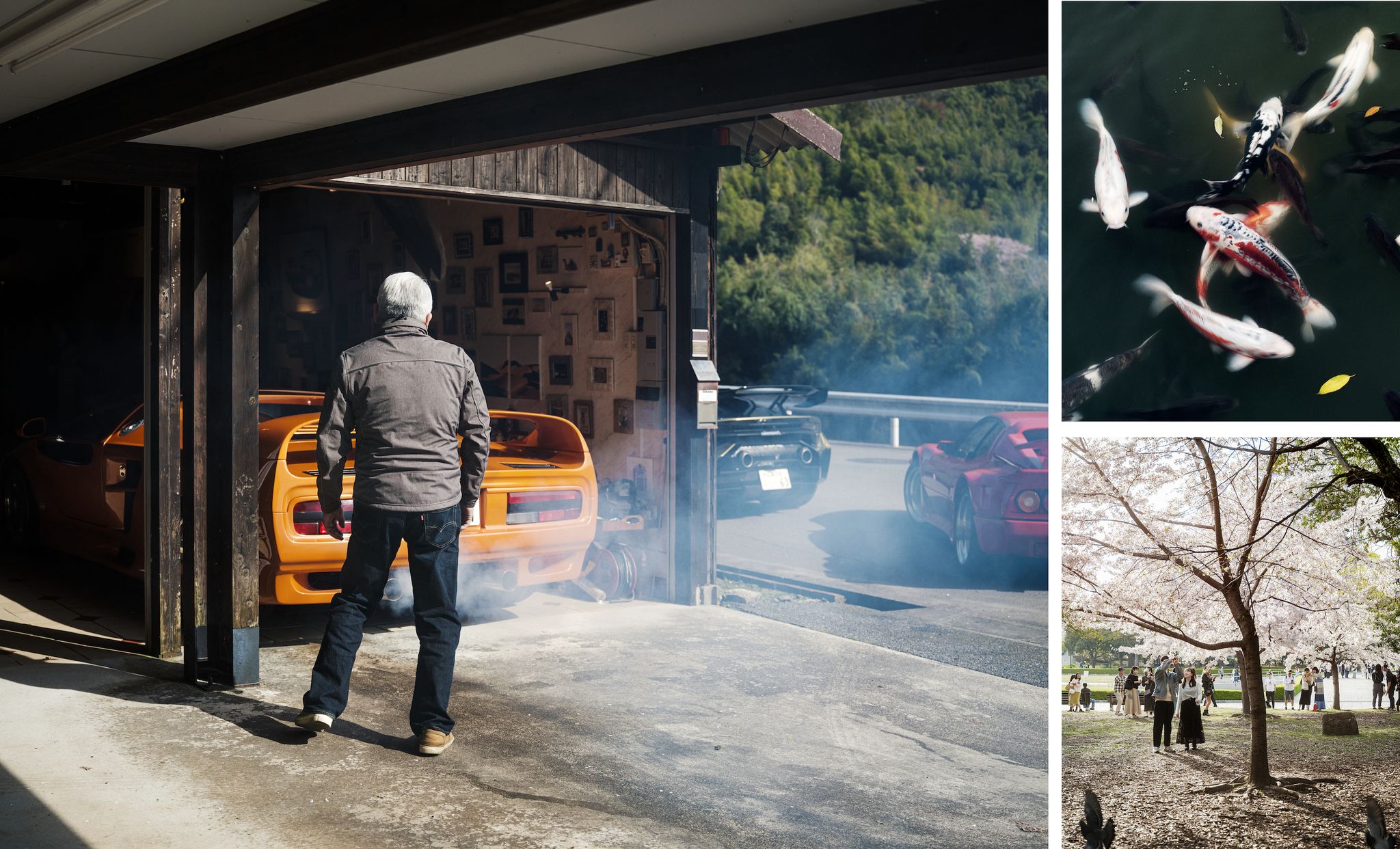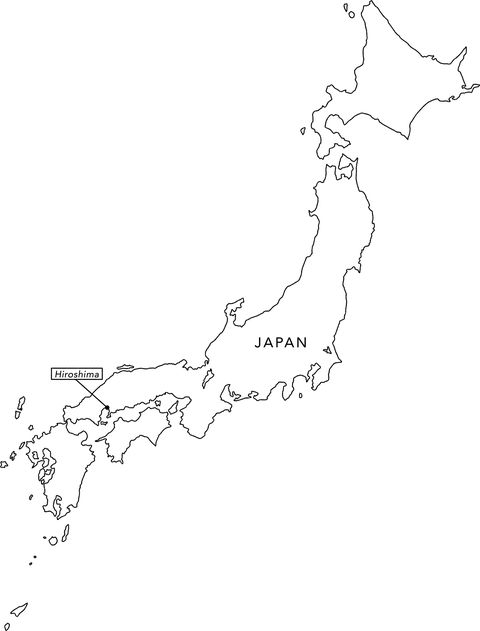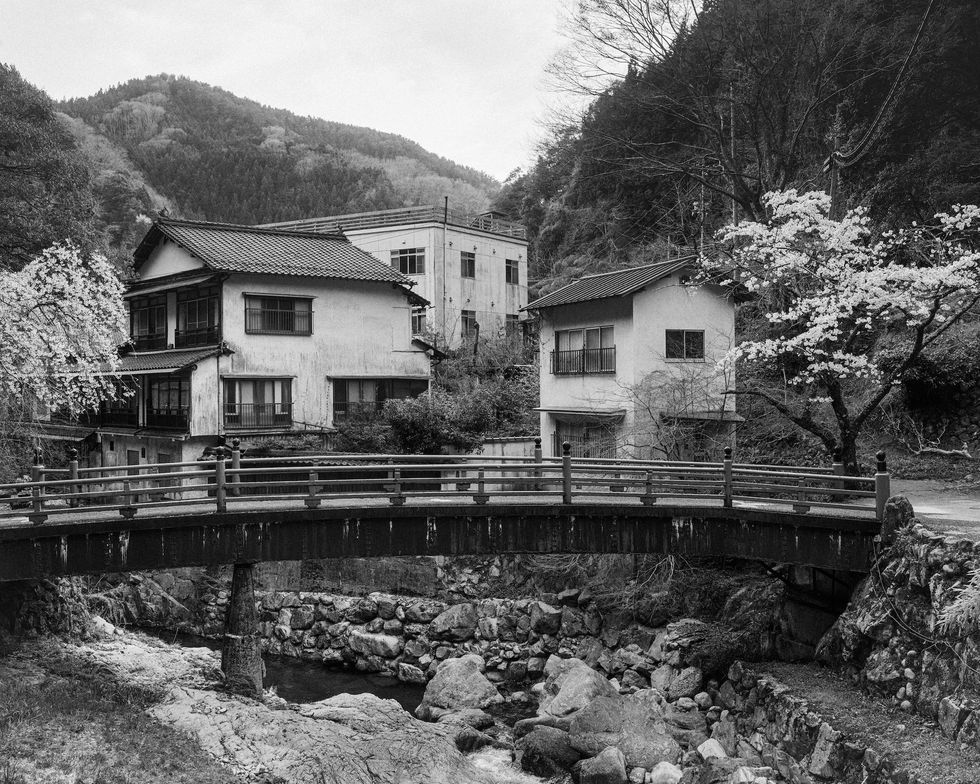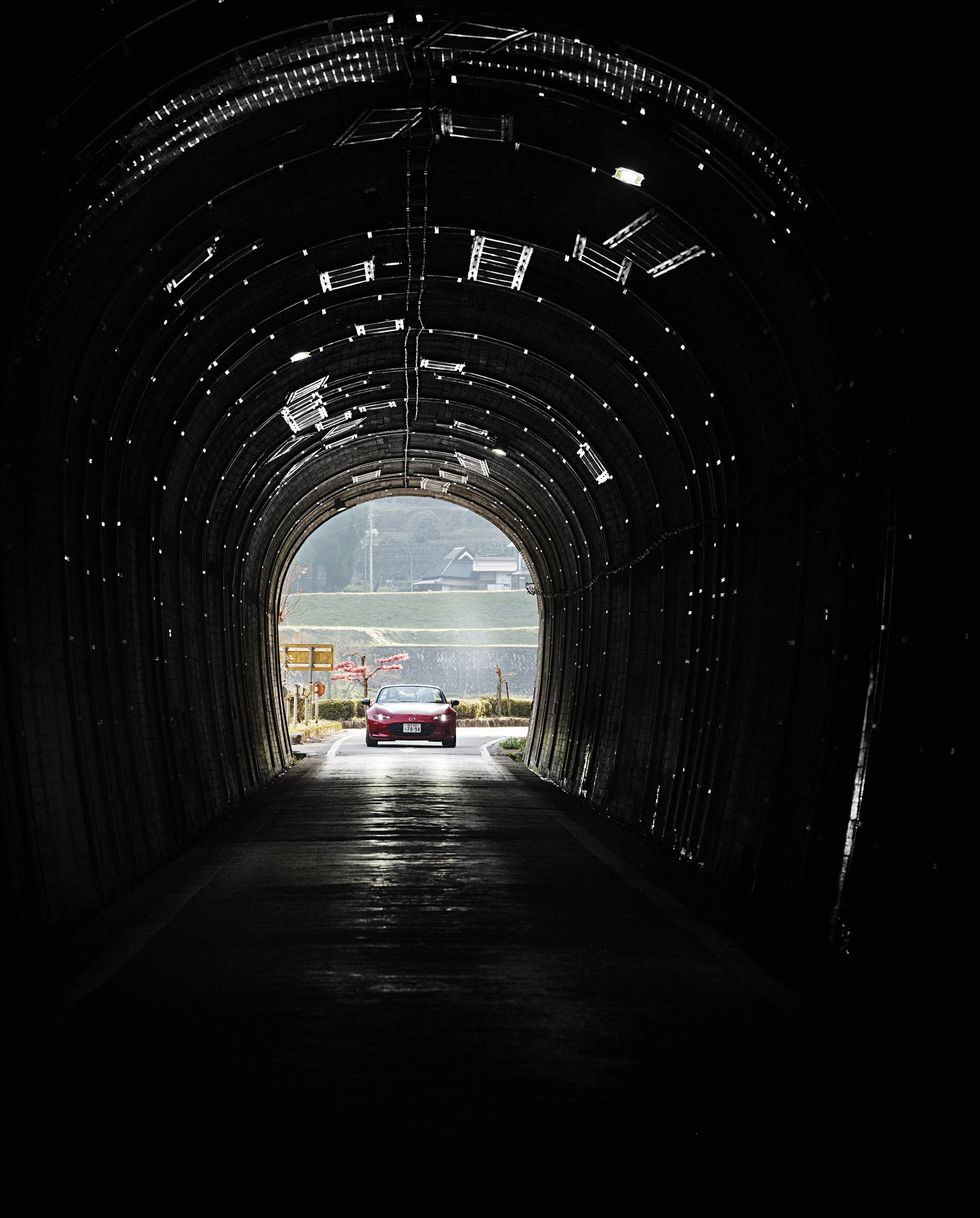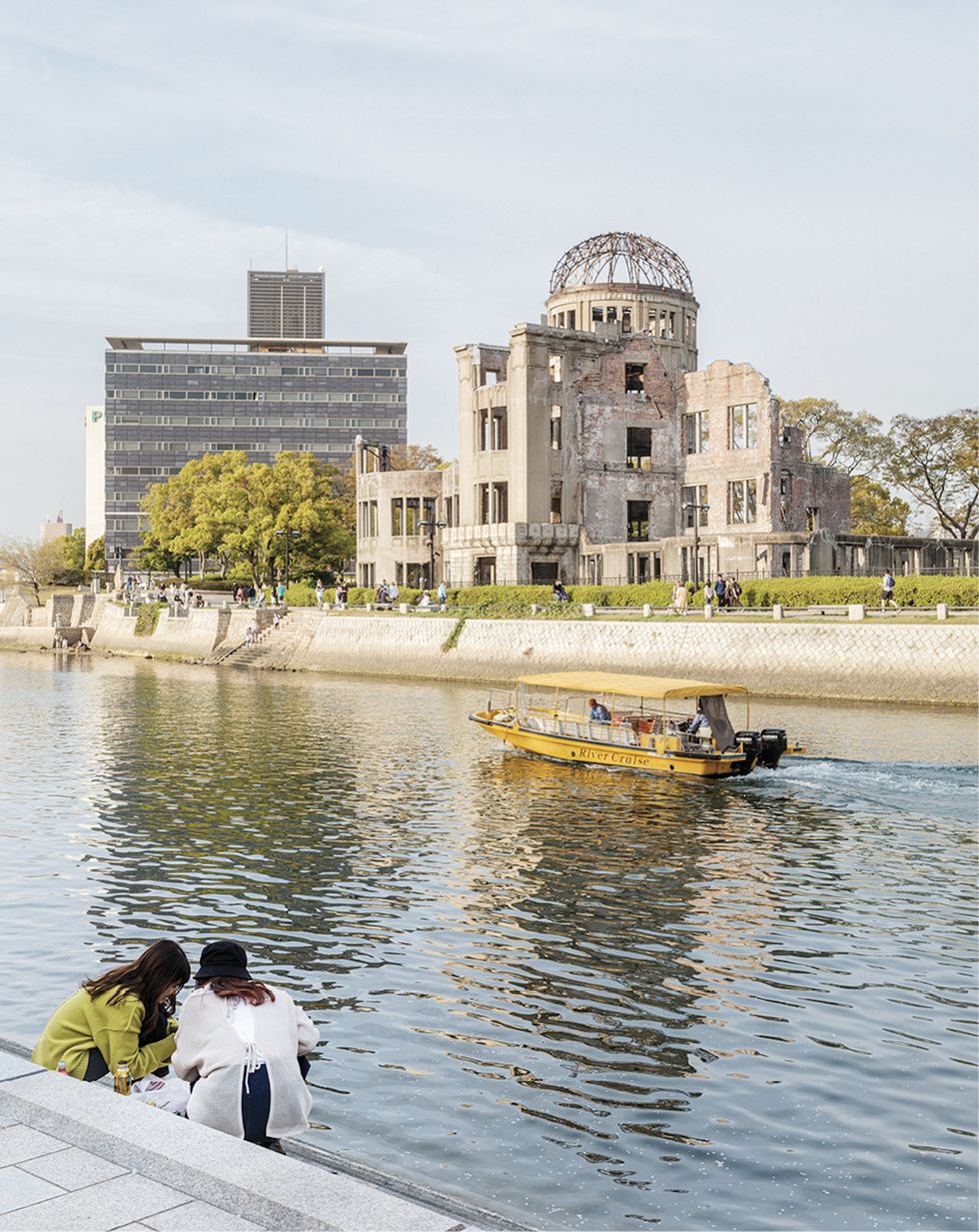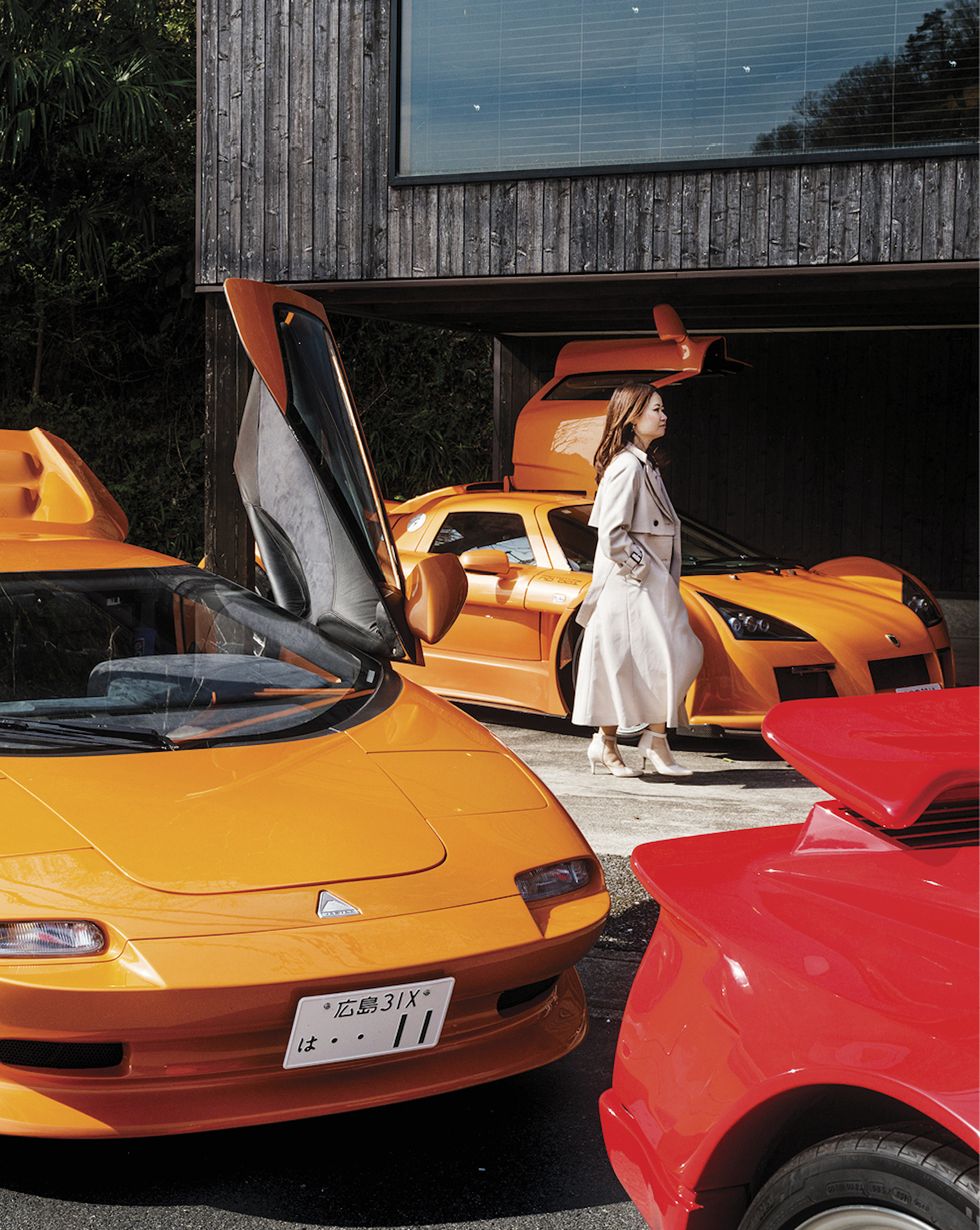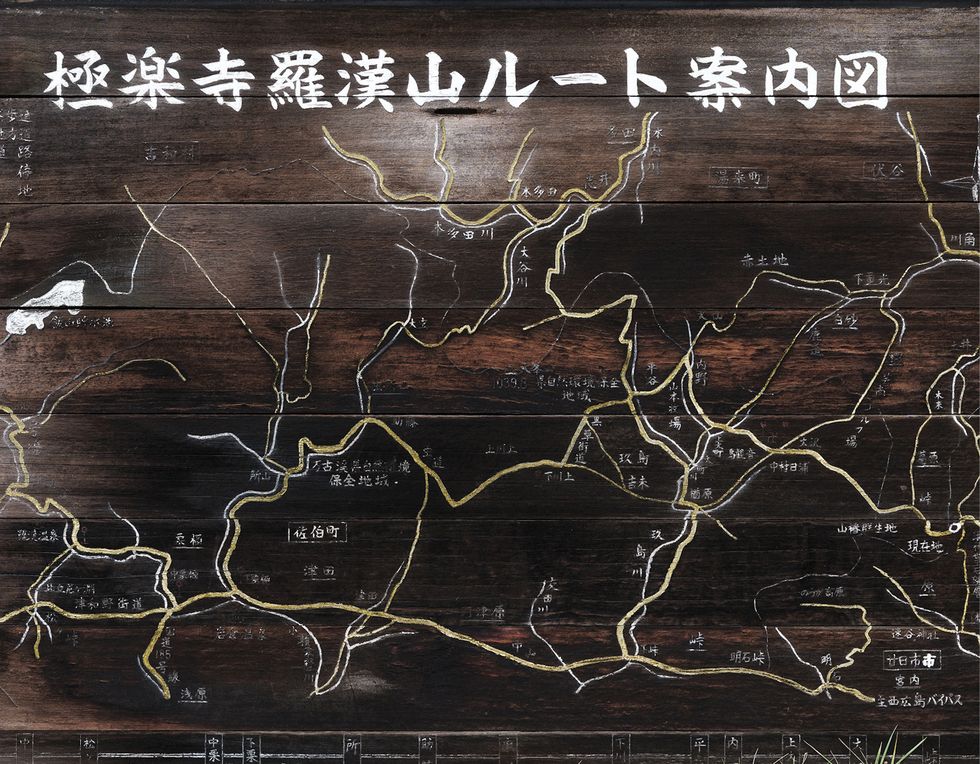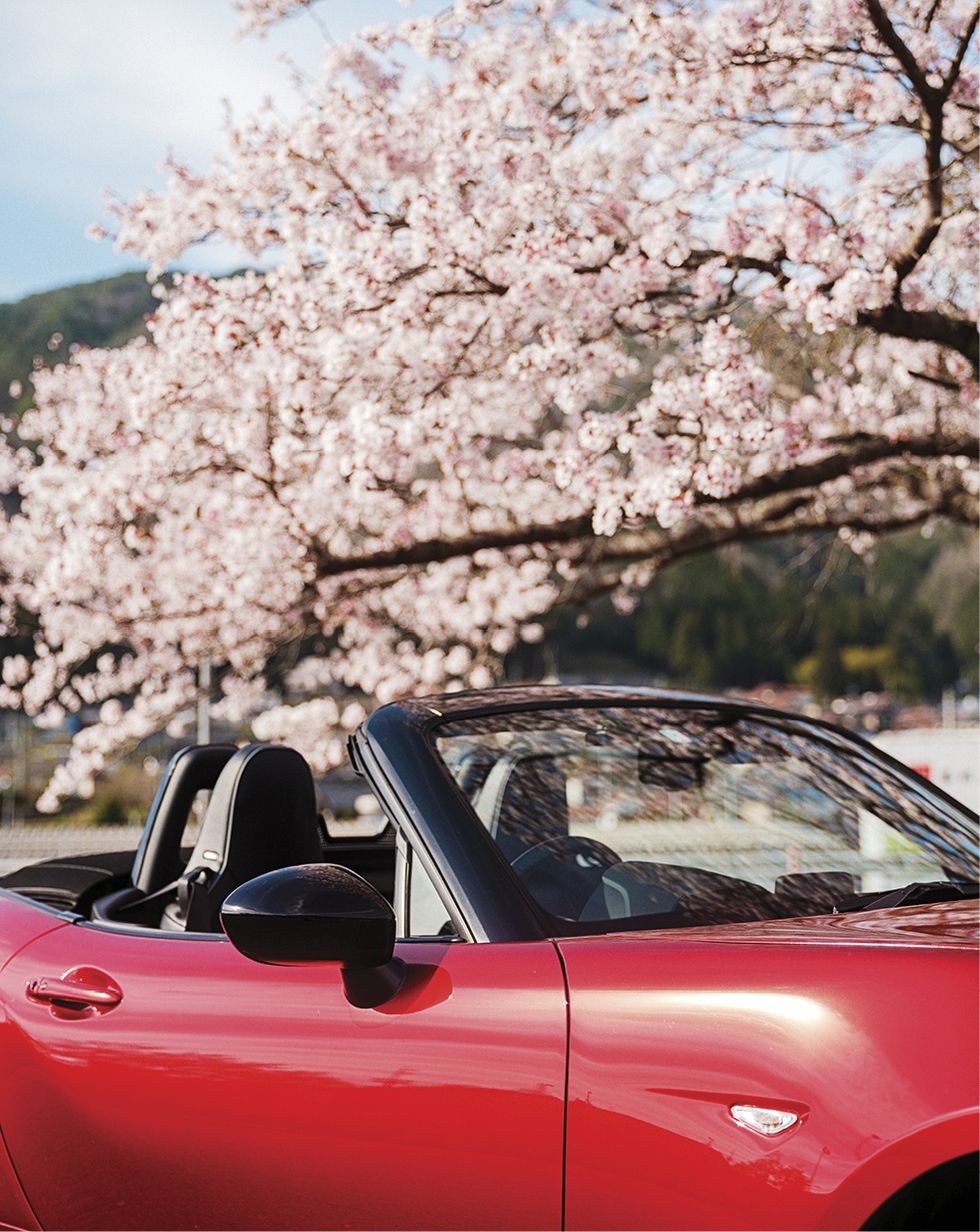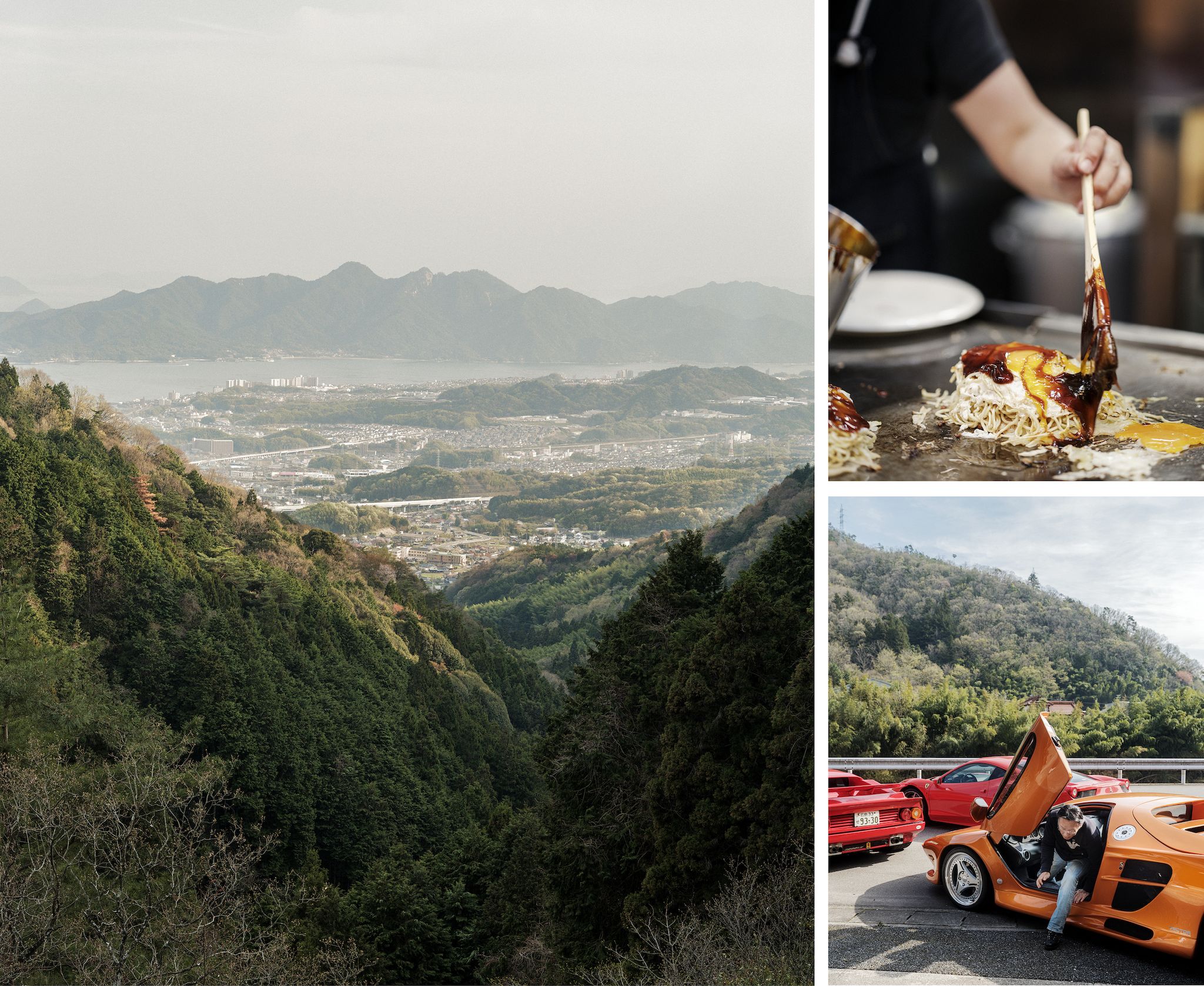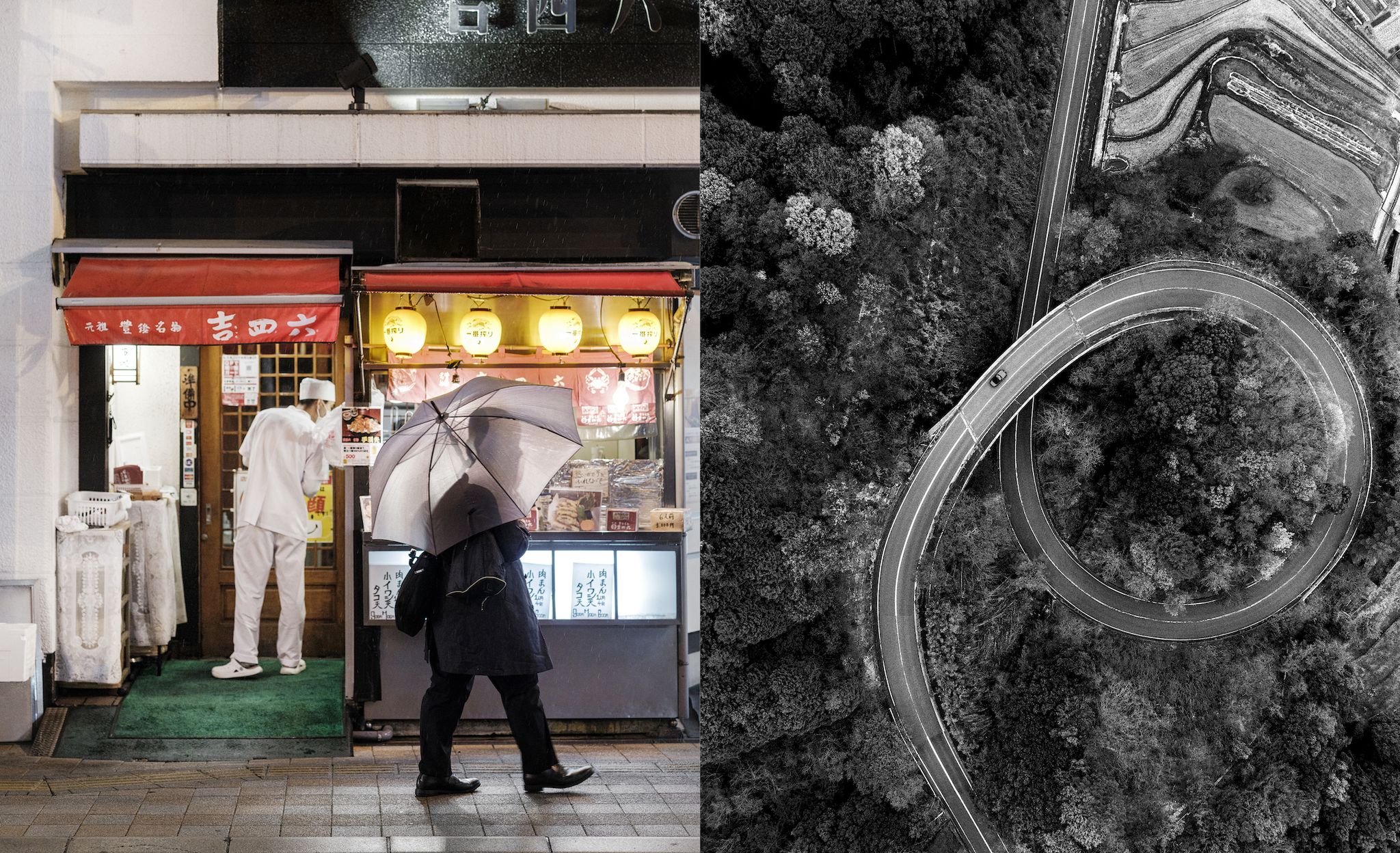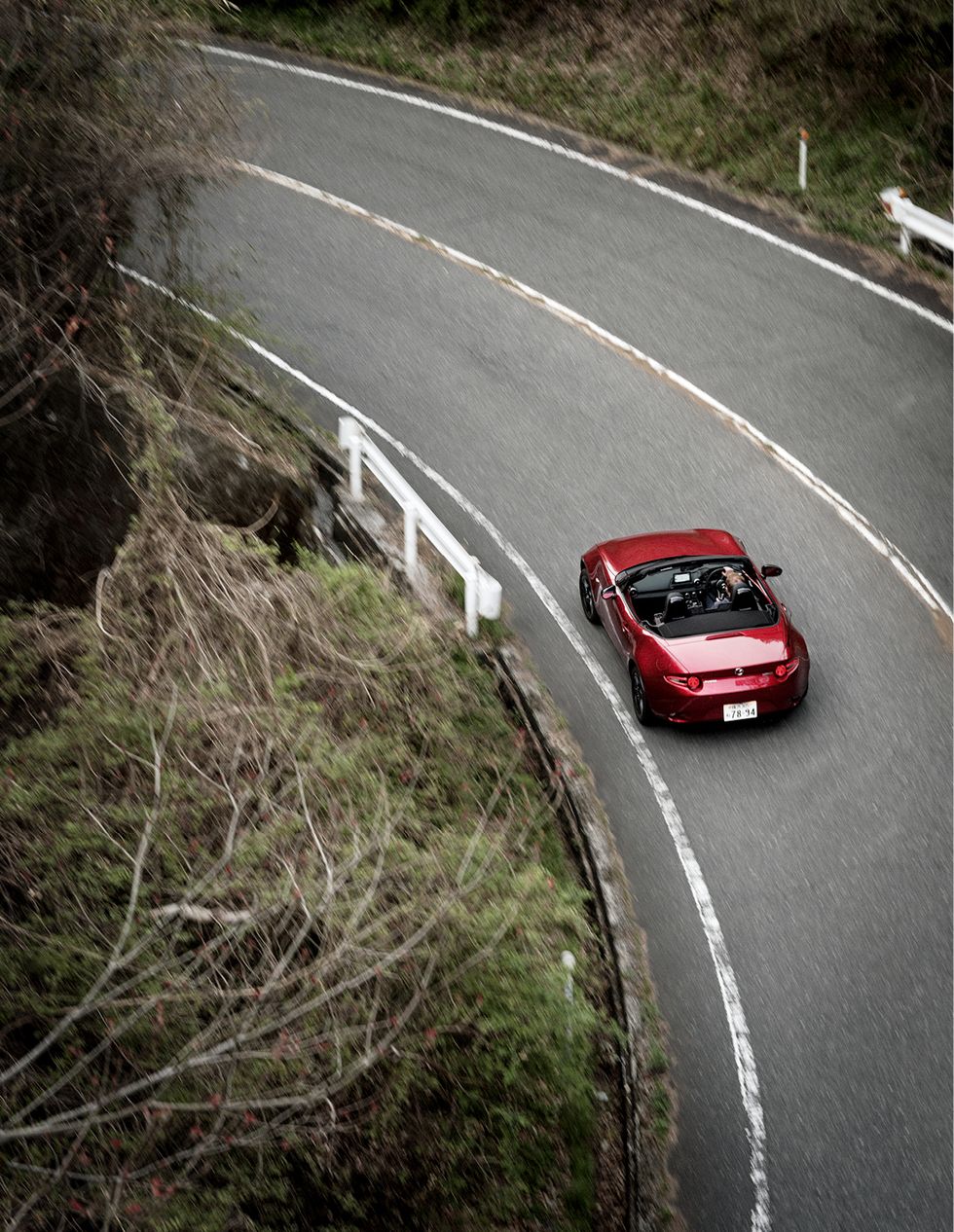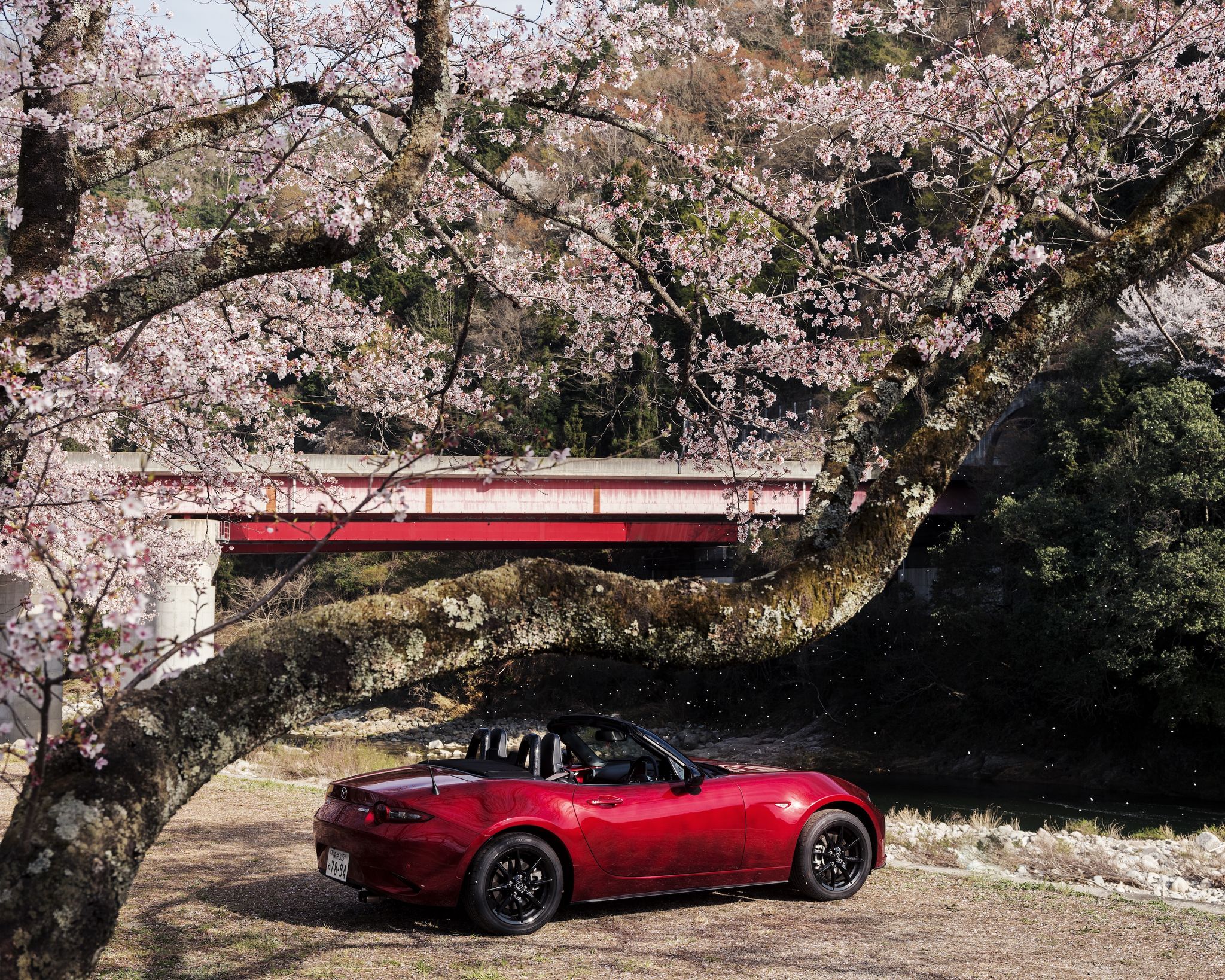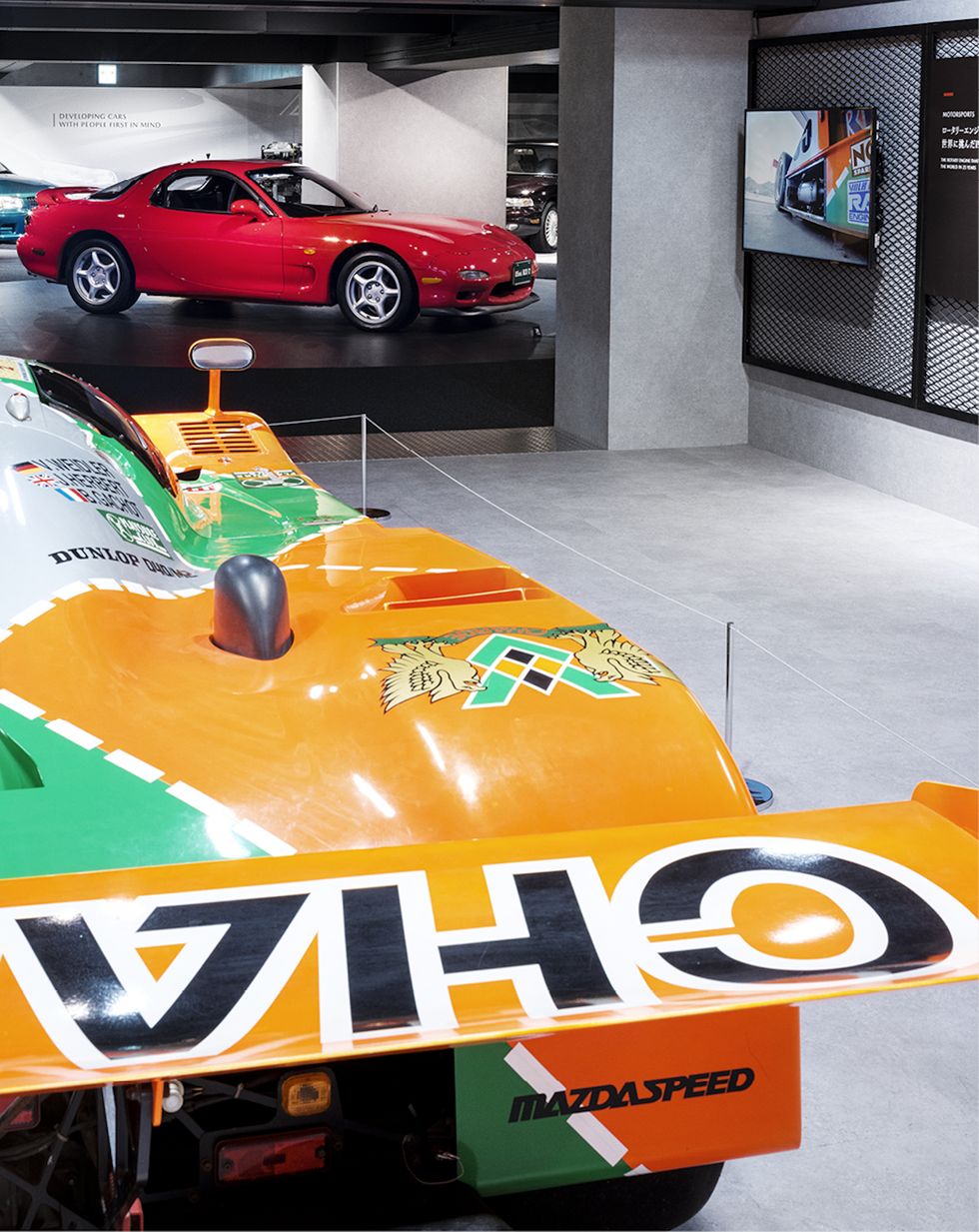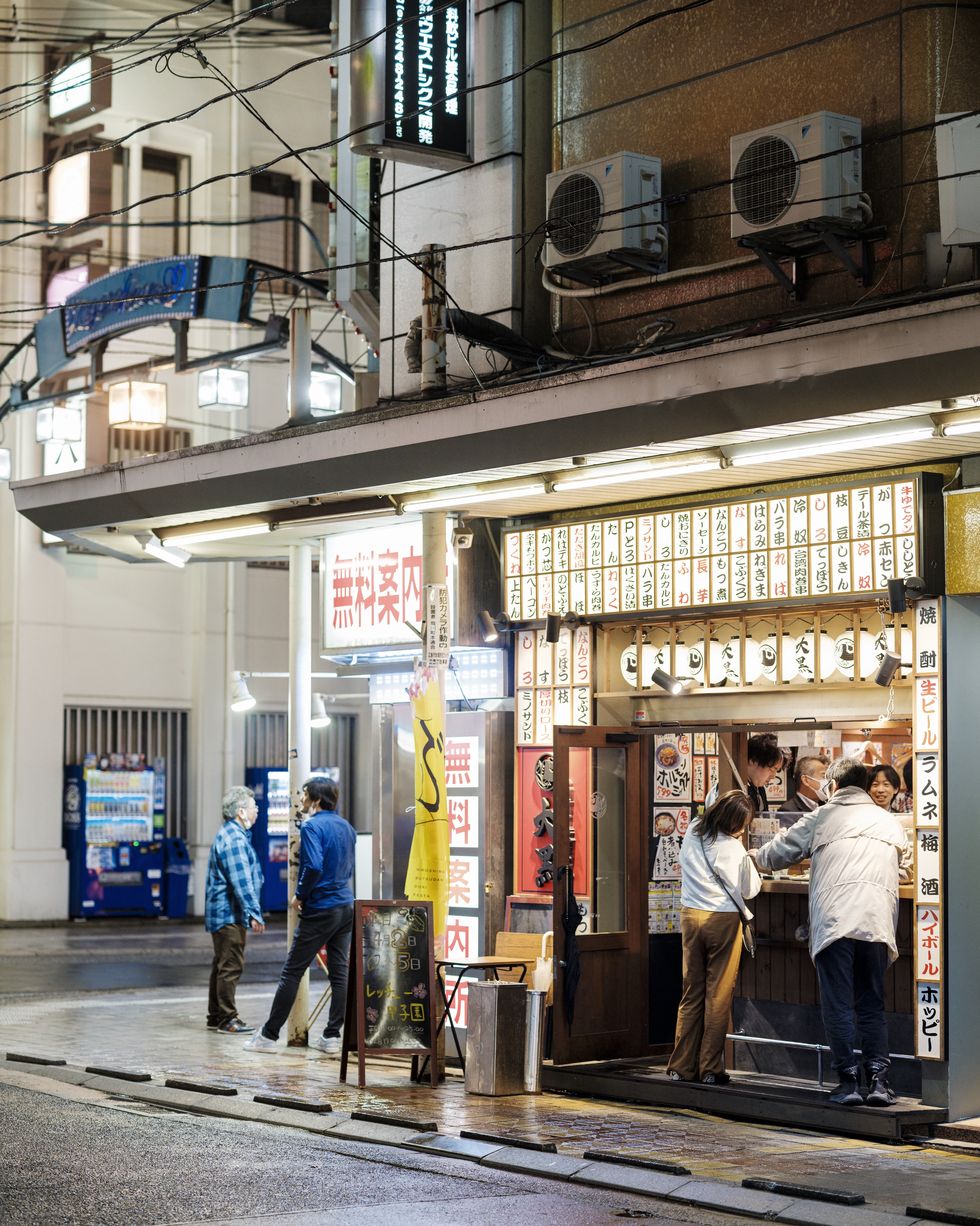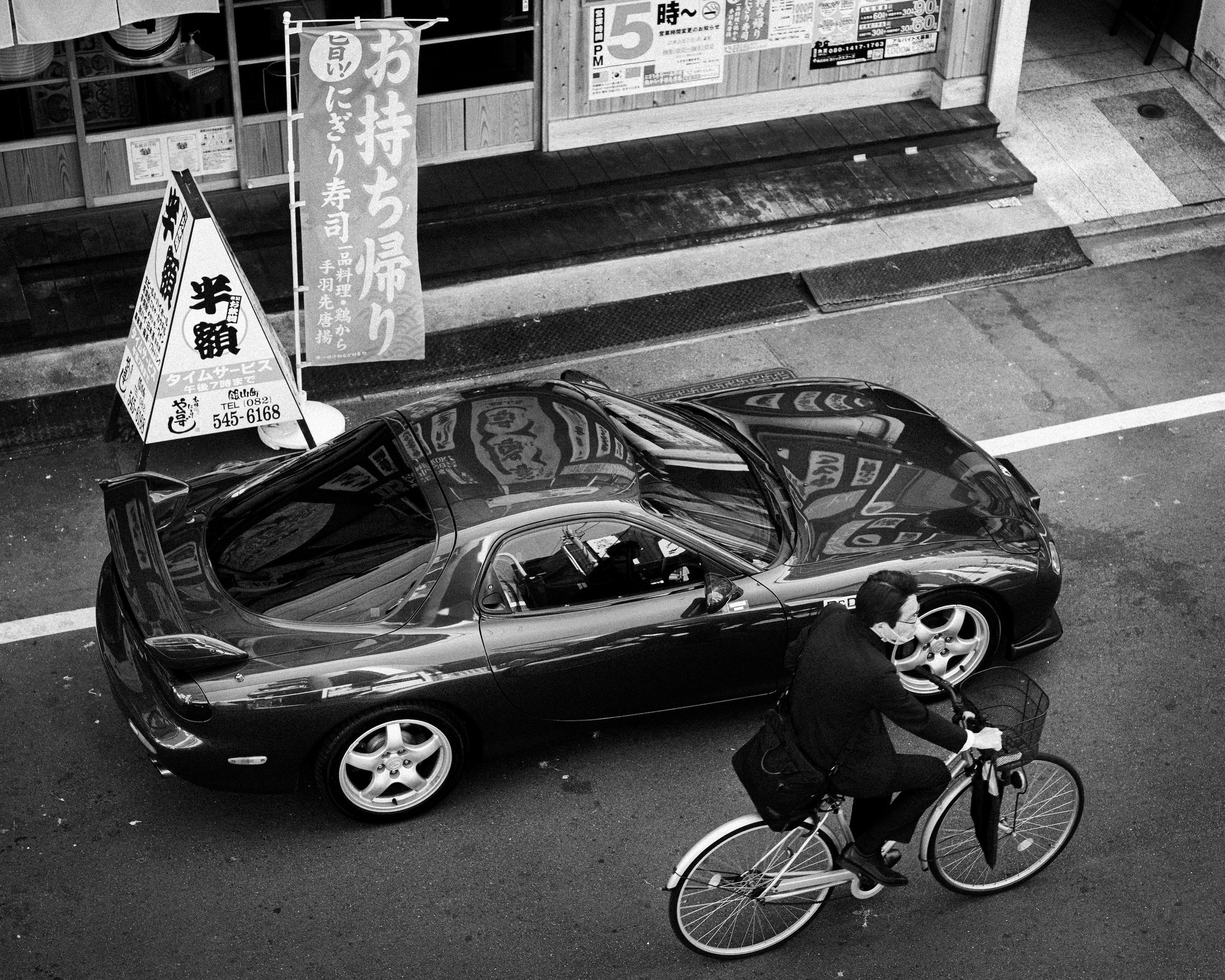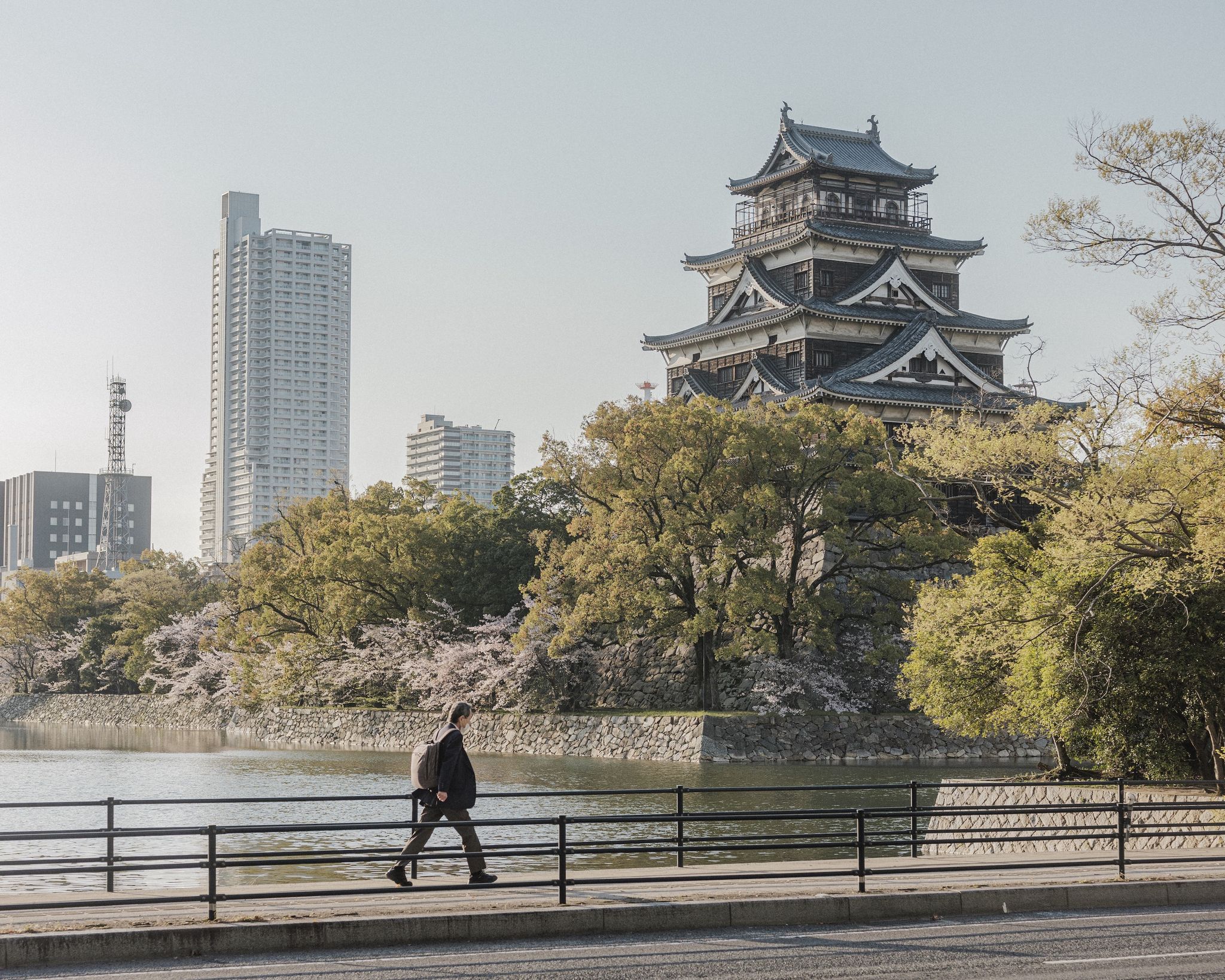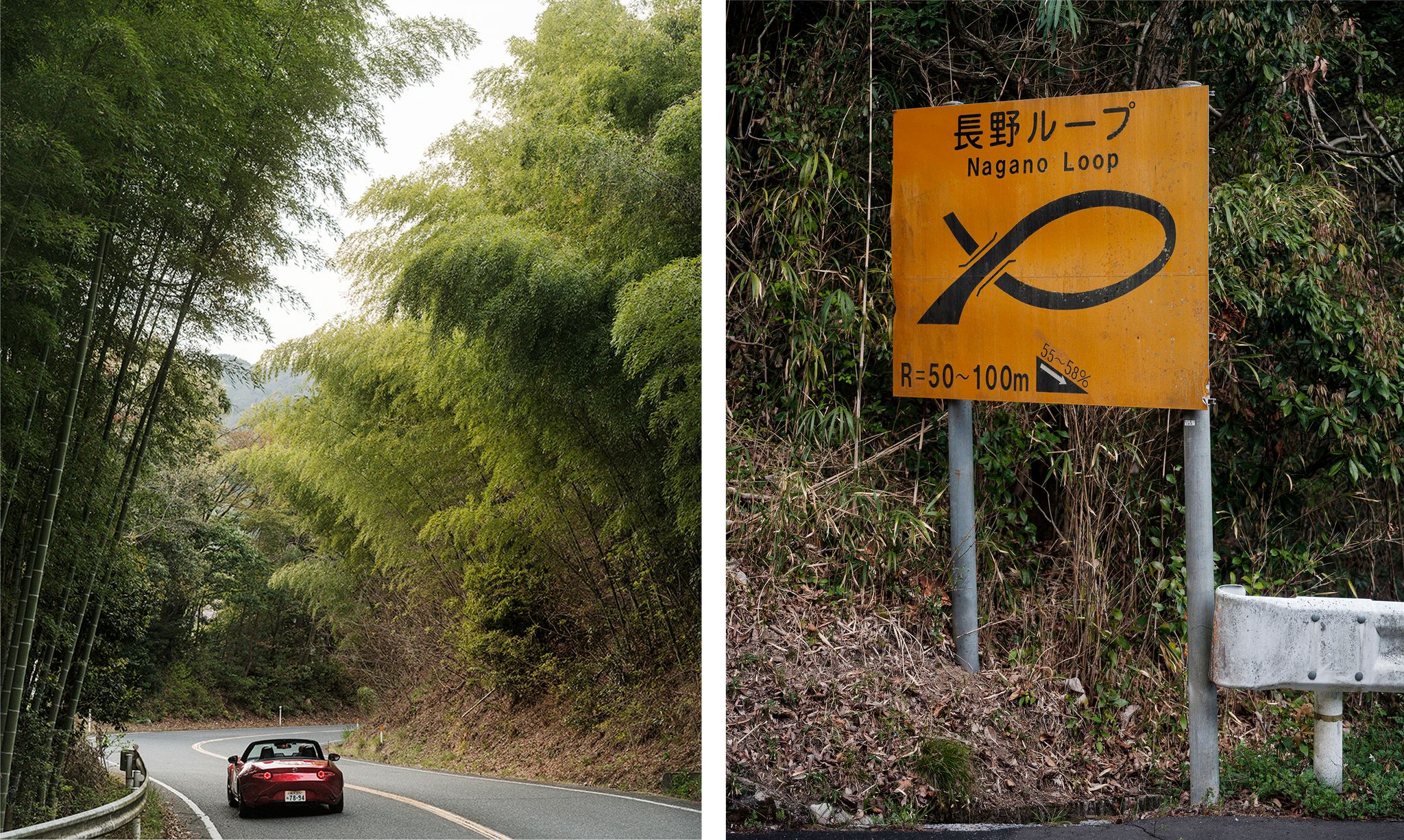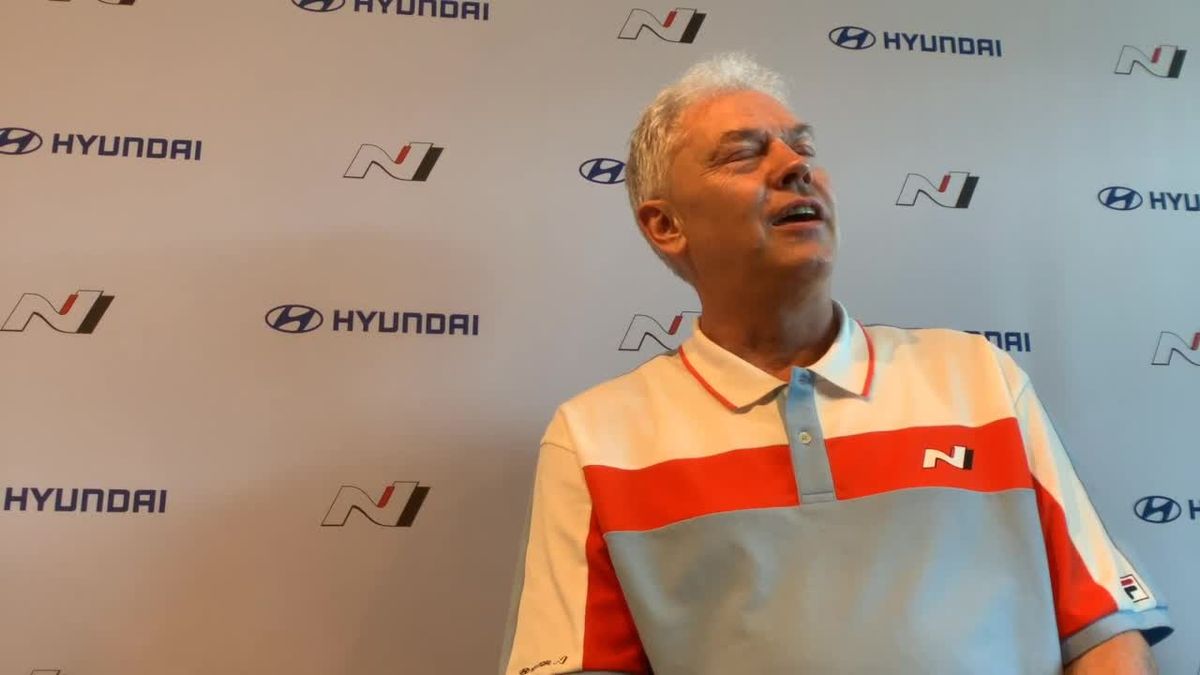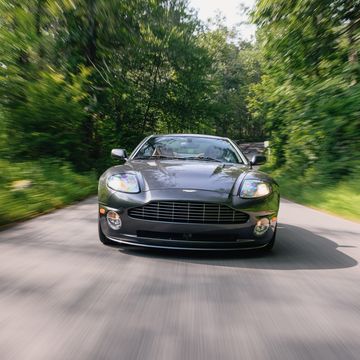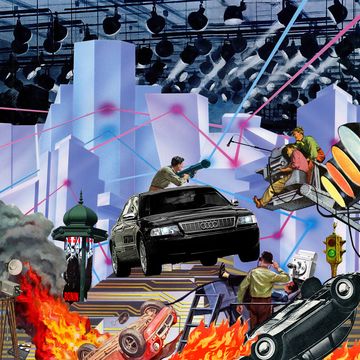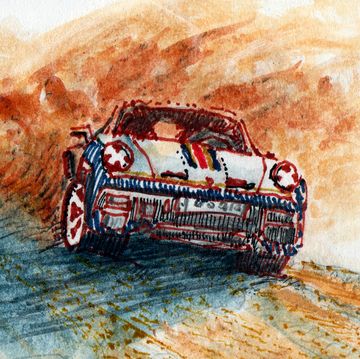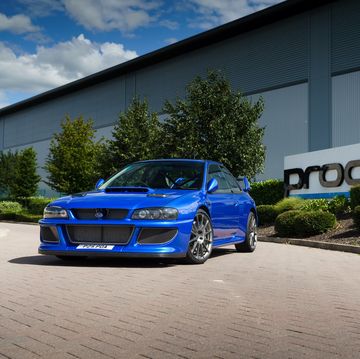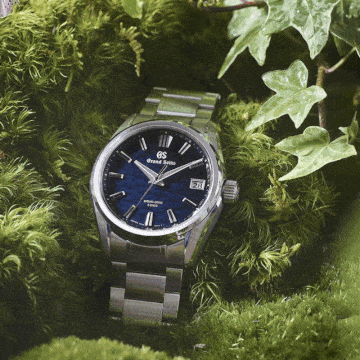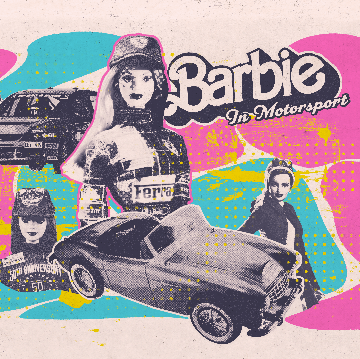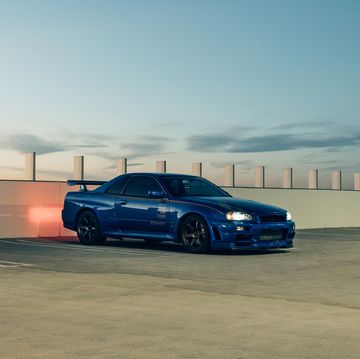After two miles of tunnel, Hiroshima Expressway 4 fires a little red Mazda out across the heavily forested hillside. One moment, it’s dimly lit concrete overhead; the next, an elevated bridge deck overlooking the entire western flank of the city. It’s a knowable city—big enough to contain nuance but small enough to comprehend. It’s like seeing an old friend again after years apart.
This story originally appeared in Volume 17 of Road & Track.
Hiroshima isn’t in the top-10 Japanese cities by population. Tokyo is New York, Osaka is Chicago, and Hiroshima is Portland, Oregon, with kei cars. Tourists who travel four hours by bullet train from Tokyo to see the atomic-bomb memorial dome and walk through Peace Memorial Park are often surprised by the city’s small size and slow pace.
To drive in and around the city—as I am doing in that little red Mazda MX-5—is to understand Hiroshima’s soul. To the south, the Seto Inland Sea is a dumpling soup of islands, but on the other side, Hiroshima is contained by mountains. In that way, it’s similar to Santa Barbara, California, which shares its latitude. Roads cover the hills like a fishing net. They bound through the canyons or wriggle up the slopes in knotted switchbacks—tarmac bliss through the wilderness, mere minutes from the city’s heart.
When I arrive on Sunday morning, a crowd has already gathered at Tomohiro Aono’s garage. Tucked away in a valley near the slow-flowing Ōta River, the garage holds six cars and other mementos of Aono’s travels. The name on the mailbox reads “Car Maniac TA.”
Over the years I have known him, Aono has owned a Jaguar XJ220 LM, a Lamborghini Murciélago R-GT, and a touring-car-spec Ferrari 550 Maranello. Nominally racing cars, all of these wore street license plates. So did the Lola T70 he owned years ago. Today the engine of an orange Vector M12 buzzes at teeth-rattling volume as the car backs out to join a Koenig-tuned Ferrari 512BB and the first Gumpert Apollo.
A brace of Lamborghini Huracán STOs, a Ferrari F8 Tributo, and several other exotics accompany this unusual trio. The owners chat happily as longtime friends with some new introductions. It’s a typical club drive event.
Supercar culture in Japan is long established, and in Tokyo, rare machines invade the Daikoku Parking Area on Sunday mornings. That’s not how it is in Hiroshima. Gatherings here are less public, and supercar owners aren’t standing around. They’re hustling the machines through the countryside.
There are two types of roads around Hiroshima: the narrow rural routes, which blend British B-roads with California canyon routes, and the toll highways, four-lane routes that bore through the mountains and soar high above the valleys on elevated roads.
Once, when visiting a Lamborghini mechanic in Hiroshima, I came across a 25th Anniversary Edition Countach with more than 140,000 miles on its odometer. Who miles out a temperamental exotic? A not-atypical Hiroshima supercar owner, that’s who.
Following a pack of supercars into one of the long road tunnels is like standing close to the speakers at a live rock concert. The eight-, 10-, and 12-cylinder fury echoes off the hard surfaces, a thunderous cacophony of noise and vibration felt in the eyeballs.
The pack moves slowly enough for a few rolling photos, but boredom soon sets in, and the cars flicker off toward the horizon in sorties of twos and threes. Later I’ll come across a random Maserati and Aventador toying with each other in the fading afternoon light, flashing past with there-and-gone brevity, still audible after they’re long out of sight.
At the turn-back point, however, the photo escort assumes a much slower pace. Most cars in Japan have electronic toll-payment readers. But the MX-5 I am driving does not, so each toll stop includes frantic fumbling of coins and paper tickets to raise the barrier before the supercars slip away. I miss one ticket, and the machine flashes its confusion and makes demands in recorded Japanese. Happily, the driver of a green MG soon arrives to help.
The MG, a charmingly anachronistic 1953 TF, is driven by a young Japanese engineer named Akinari Sato. Dapper in a fedora and tasseled loafers, he works the gearbox of the diminutive British roadster with alacrity, and the car emits little puffs of blue smoke as it scampers along the highway. (It later emerges that Sato has the lap record in a one-make series at a local racetrack.) I’m guided back to one of the many rest stops that line Japan’s highway system to rejoin Aono in his Koenig 512BB, and then we head back to the garage for coffee.
Lunch is a specialty at a tiny restaurant nearby. Though off the tourist track, the place is packed, and I belly up to a hot griddle where the cheerily red-faced proprietor wields steel and seasonings to create five servings of okonomiyaki. A savory filled pancake, Hiroshima-style okonomiyaki is stacked high with cabbage, bonito fish, pork belly, and noodles, topped with a fried egg.
Hiroshima has one three-star Michelin restaurant but more than 2000 okonomiyaki joints. As with the supercars, joy is in the flavor of experiencing life.
At the beginning of the Eighties, after much internal lobbying, Mazda chairman Kenichi Yamamoto green-lit the development of what would become the Miata MX-5. The bait was a loaner Triumph Spitfire, while the fishhook was the long route out of Hiroshima on a business trip to Tokyo. Yamamoto, a pragmatic engineer who had worked his way up from the assembly line, was reeled right in.
Little wonder because, off the toll highways, Hiroshima’s countryside is a driving playground. Here, a crimson fourth-generation MX-5 venerates its roadster ancestors in the corners, including those British sports cars from that other far-off island. The MX-5’s Japanese-specification 1.5-liter four-cylinder engine is a displacement match for Sato’s MG TF and, likely, that borrowed Spitfire.
Only engineers who grew up on roads like those surrounding Hiroshima could have distilled the essential goodness of the MX-5, which was inspired by English sports cars and sketched out by Californians. What traffic there is consists of Lilliputian pickups and the occasional van. But scattered in is a mix of the tiny and fierce: a mid-engine Honda S660, a Renault Megane RS hot hatchback, a modified Daihatsu Copen with a comically huge front-mounted intercooler burping air from its blowoff valve. The MX-5 streaks past them, up and away, until we reach the road’s dead end at the Sandankyo Gorge. Here is a popular short hike past a series of waterfalls, empty and silent in the off-season.
Returning in an aimless loop through anything that looked particularly wriggly on GPS, I drop into a small town at the confluence of the Tsutsuga and Ōta Rivers. Just on the outskirts is a small sakura park, a grove of cherry and plum trees, with families picnicking on blankets beneath the blossom-laden boughs.
This annual springtime tradition is called hanami, or flower viewing. A warm breeze showers petals in a blizzard over the parked MX-5. A familiar pulsing beat breaks the silence, and I look up to see an RX-7 cruising into the park, its driver looking for a place to take pictures.
Mazda founder Jujiro Matsuda was the 12th son of a poor fisherman who died when the boy was just three. At 13, Matsuda left for Osaka to become an apprentice blacksmith. At 50, he rebuilt a burned-out cork company into a metalworks and truck plant. At 70, in August 1945, his car was blown off the road by the explosion of the atomic bomb that largely destroyed Hiroshima and hastened the end of World War II. In four months, Mazda was building trucks again—trucks that were part of rebuilding Japan.
Mazda’s museum, located in the factory in Matsuda’s hometown of Mukainada, presents the company’s history with a well-curated selection of vehicles. Like many automotive museums, it is a three-dimensional glossy brochure of the past. The exceptions are the motorsport exhibits featuring machines scarred from past races.
The apex of these is the 787B Le Mans prototype, which won the 1991 24-hour race. It shouldn’t have. Mazda’s two entries in 1991 qualified 12th and 17th and should never have caught the Mercedes, Jaguar, and Peugeot entries. But with dogged determination, the No. 55 787B slugged it out, finishing with a two-lap margin of victory.
The four-rotor scream of the 787B is indelible, a satanic dentist drill that wailed as one of the loudest-ever racing machines. Really, though, the car carries a more subtle message, exemplified by a sticker on its engine cover that reads “We will never give up.” The year 1991 marked Mazda’s 13th attempt at Le Mans, with little chance of a win. The underdogs showed up anyway and took the trophy.
In the Mazda headquarters parking lot, I turn the ignition key, and the twin-rotor turbocharged 13B engine of a third-generation RX-7 whirs to life. Revealed the same year as the Le Mans win, this car is Mazda’s bleeding-edge attempt to match Porsche for road performance.
This example is not a museum piece but an R&D model occasionally lent to new engineers to experience Mazda’s heritage directly. The engine blends turbine smoothness with a twin-turbocharged surge of boost as it hurtles the RX-7 toward Hiroshima’s bustling entertainment district.
As I park the car here and there on narrow lanes for photography, I clock how both young and old Japanese recognize the RX-7 with admiring glances. Even two decades out of production, it’s a hero car; its design and technology are wildly different from anything Toyota or Nissan builds. Other manufacturers abandoned the rotary engine at first frustration. Mazda made it a winner.
It’s the kind of car that comes from a city with what the people call “challenger spirit.” Rebuilding from the ashes. Fighting the long odds. A tradition of never quitting.
The way of the gods.
On the last day, with rain clouds building on the horizon, I dashed the MX-5 down another empty mountain road. In the highlands, the tarmac squeezed between rain gutter and unyielding concrete, then rose over the pass with a glimpse of the city and the Seto Inland Sea below. On the return, the road looped in a perfect circle to shed elevation.
Along the way, I passed several small roadside shrines of the sort scattered all across Hiroshima prefecture. The city is famous for the Itsukushima floating torii gate and tame deer of Miyajima island, but both urban and country landscapes are studded with these shrines, which pay homage to local spirits. Mazda has one on the company grounds.
I randomly park at one. The MX-5’s engine pings as it cools, and I walk beneath a high canopy of Japanese maple trees, stone lanterns marking the way. The shrine, Hayatani, is entirely deserted this evening. More than 1000 years old, it turns out to be locally famous for traffic-safety blessings and is considered to house the guardian spirit of the nearby expressway. The place is cool, quiet, and fastidiously clean; the only sound is the gentle susurration of leaves.
I return to the car in the fading light and join the traffic flowing into the city. The next morning’s schedule is an early train out. As the illuminated signs flicker on at Hiroshima’s innumerable convenience stores, I murmur a silent farewell to a resilient and thriving old friend.
